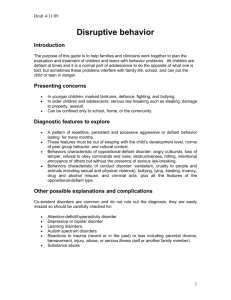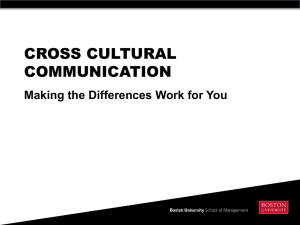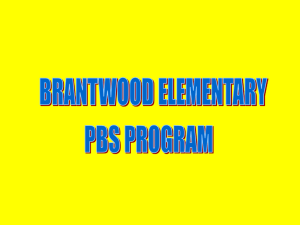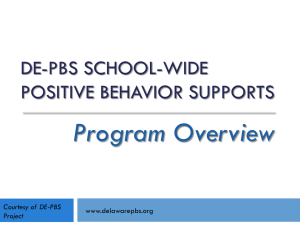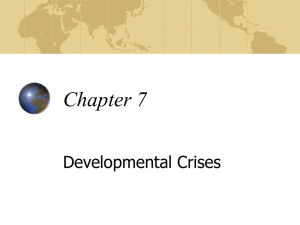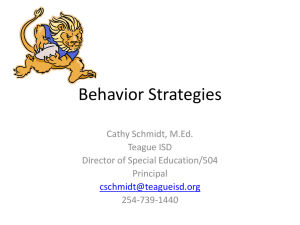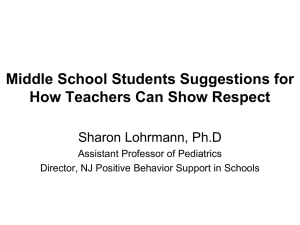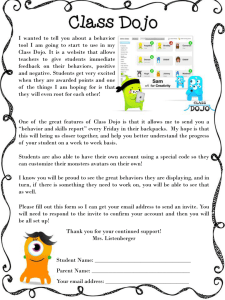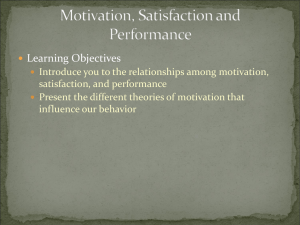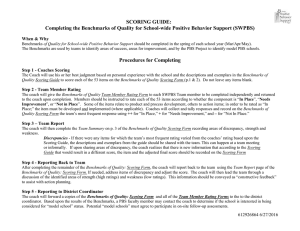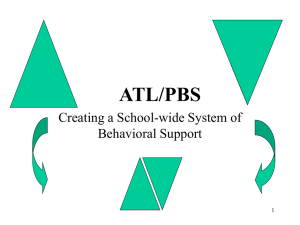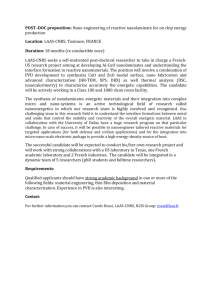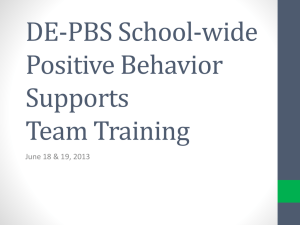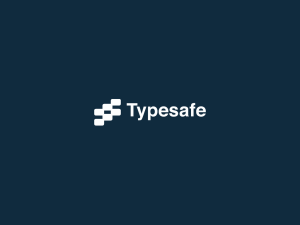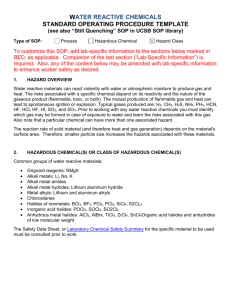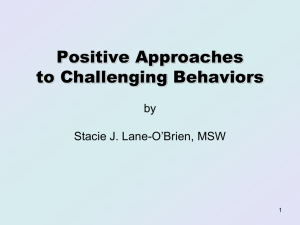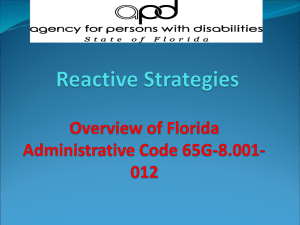Classroom Behavior Management
advertisement
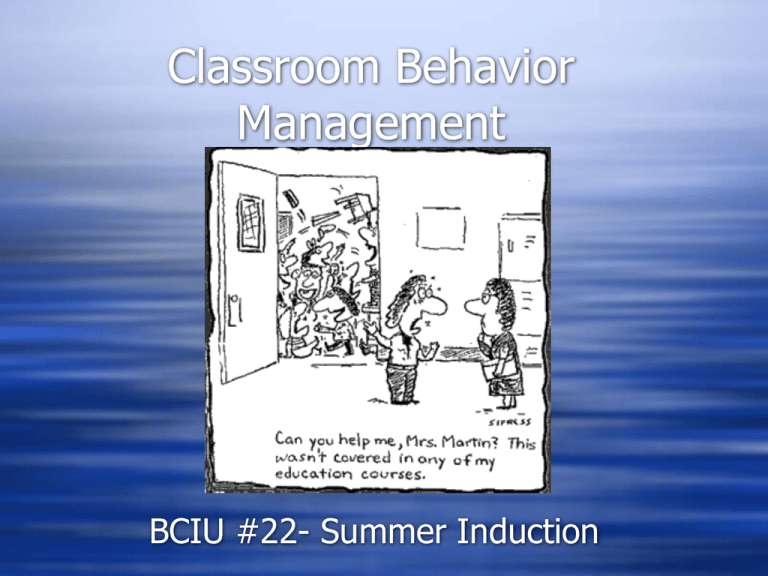
Classroom Behavior Management BCIU #22- Summer Induction Positive Behavioral Support New Chapter 14 guidelines PBS plans must be based on a functional assessment of behavior. PBS plans must include methods that utilize positive Rf and other positive techniques to shape behavior. PBS plans range form the use of positive statements (“I like the way you walked in the hall”) to specific tangible rewards. PBS plans teach strategies or replacement behaviors Characteristics of a Well-Managed Class High level of student involvement with work Clear student expectations; posted and visual Relatively little wasted time, confusion, or disruption with scheduled and constructive “down-time” Work-oriented, but positive and pleasant climate. Activity #1 Pretend you are a supervisor walking in to a classroom… List five observable red flags that indicate or signal a mismanaged classroom. List Five observable green flags that indicate a well-managed classroom. Share as a group. Discuss tips for classroom management Procedures and Routines: Students need to know “what” is expected for good classroom management. Procedures are the “what” that teachers expect. Routines are the “how” that will accomplish this. THESE NEED TO BE TAUGHT AND PRACTICED! …therefore this should be the focus of your first few weeks of school. What are the most important routines for Class-wide Behavior Management Systems Rules, rewards, consequences Tools Reinforcement menus Motivators/ positive Rf Student contracts Checklists, logs “Classroom cash” rewards Self and Match System Jamie S. Salter, ED.S, BCBA, NCSP and Katharine M. Croce,M.Ed.,BCBA At the beginning of the morning and afternoon, student selects the reward he is working from. At the end of the designated time period student and teacher or IA will answer the questions. At the end of morning and afternoon student and teacher will total points to see if he reached his. If so, student will receive the pre-determined reward. The list of rewards should be created at the beginning o f each year and can added to when ever a new approved reward is determined. Examples: Weekly Data Collection Crisis Prevention and Intervention “An Ounce Of Prevention is Worth A Pound Of Cure” – Benjamin Franklin Why Prevention? Focus should be on the prevention of problem behaviors Should provide early access to effective behavior support Should teach positive replacement behaviors “Get tough” punishment does not work. Good instruction (behavior; academic) improves student behavior and academic outcomes. Many students present with a host of needs: good luck reacting to them! Traditional reactive approaches do not teach skills, and they remove kids from instruction. We need to foster independence! Effective Instruction + Proactive Strategies = Opportunities to Help (continued) Students who have been suspended are more likely to repeat offenses and drop out of school. Students from minority backgrounds and students who have low academic skills are more likely to be suspended/expelled. Teachers who rely on punishment and do not use enough positive reinforcement risk backlash from students. (Skiba & Knesting, 2001); Morrissey, Bohanon, & Fenning, 2010) Focus of Prevention Should Include… Positive Climates Positive Relationships Positive Approaches: Climates Have your school-wide system in place, and make it predictable. Make sure to have a backbone behavior system in place, when students display problematic behaviors. Create a culture in which staff members are consistent, communicative, work collaboratively, and have fun together. As a program, focus on the positive!!! Make sure the environment/classroom is well organized and inviting. Have classroom rules well displayed. When students enter the school/classroom each day, interact with them. Climates (continued) Wait at the door/in the hallway to interact with students. Say something positive/funny to each and every student that enters the room Have consistent and visible supervision at all times. Set high, but reasonable expectations for both staff and students. Make sure students have a say. Work together. HAVE FUN!!! Positive Approaches: Relationships Question: What is one of the biggest protective factors for kids? 1 caring adult Baumrind’s Parenting Styles Applied To the Classroom High Control/High Support (Authoritative) Low Control/High Support (Permissive) High Control/Low Support (Authoritarian) Low Control/Low Support (Neglectful) (Tomes, 2007) Relationships (continued) Make Five Positive Statements for Every One Negative Statement You Use!!! While building a unique relationship, always keep in mind that it is a student-teacher relationship; boundaries! Start everyday with a clean slate. Take a genuine interest. Be an active listener. Engage with students outside of the traditional classroom setting (think outside of the box). Be vulnerable and make fun of yourself. Be open to making mistakes. Model good coping skills, attitude, and work ethic. Relationships (continued) Model good conflict resolution skills. Make a point to say something nice to each student every day. It’s not what you say, it’s how you say it. Invite students along to problem solve with you. Give options as opposed to telling them what to do. Help students solve problems. If you are not sure how to help, find people who can. Operate with the mind frame that you are Common Preventative Approaches That Work Differentiated and individualized instruction; Scaffolding. Access to preferred activities (i.e., computer time, ipod, newspaper, gym). Allowance to move throughout building independently. “Free” periods. Homework passes. Time out of class. Time with preferred staff member. Time to work on specialized assignment of their choice. Tangible items (i.e., food) Things That Work (continued) Class parties. Monthly awards. Creative Approaches Class jobs. Service learning projects, with each student playing to his/her strengths. Infuse tasks with interesting, applicable information—not sure what the interests are– ask the students. Use movies, music… Set up opportunities to be successful; focus on students’ strengths. (www.interventioncentral.org) Creative Approaches (continued) Daily Number. Order out Friday. Assemblies Movie Friday (last 2 periods of day). Read a book, buy a book. Delivery of Tickets: Continue to reinforce acts of kindness or prosocial behavior through delivering tickets that go into a jar. One ticket is selected each Friday, and the winning student gets to select a reinforcer from a list of three. At end of each month, 2 tickets are selected from the jar, and winning students get $25 gift certificate. Creative Approaches (continued) Social Mapping Social Stories Mentors Journals Talk Aloud Problem Solving Skills Token Economies When- Then Statements Approaches (continued) Providing Choices Therapeutic Debriefing Verbal Prompts REACTIVE APPROACHES: Common Reactive Approaches That Don’t Work Yelling Threatening Sarcasm Lecturing Embarrassing Berating Suspending Expelling Physically intimidating Taking things away already earned, without notice Physically restraining Zero Tolerance policies Common Reactive Approaches That Do Work Setting clear and consistent guidelines, and sticking to them. Giving students an opportunity to “save face” and/or change course of behavior. Positive verbal and nonverbal prompts. When redirecting, using short verbals. Students not earning certain reinforcers. Noticing warning signs, and intervening then (a proactive, reactive approach). Giving space, pulling student aside, and problem solving with them. (continued) Giving students options. Allowing students to take a “time out”. Allowing students to talk with a preferred staff member. Allowing and prompting students to use an identified coping strategy. Alternatives to suspension. Counseling and Conflict Resolution Intervening in Crises Crisis: An unexpected and often unpredictable event that overwhelms ordinary resource for coping. Make sure your school/class/program has procedures already in place because crises will happen. Provide on-going staff training in prevention and intervention. Work as a team. Goal is to ensure everyone’s safety and security. Crisis (continued) Any risk assessments (suicidal/homicidal comments or behaviors) should be done by a mental health professional; know who you refer to in your program (i.e., supervisor, social worker, counselor, school psychologist, etc.) Once engaged, realize that you may be in for the long haul. Crisis will not wait until time is right for you! Document everything before you leave work. Helpful “Oh Sh*!” Strategies Try to defuse before it gets physical Avoid power words Keep your ego to yourself Give verbal respect Address the behavior not the student’s character Remove or reduce the audience Provide alternatives or a way to “save face” Don’t struggle over physical objects Be hyper-aware of the physical environment, entrances, exits, barriers, and objects. (continued) Control your body language and paraverbals: Use relaxation strategies on yourselves Allow venting and give the teen time - verbally and physically LISTEN Allow for personal space Give teen opportunity to “save face” Use short phrases and questions Validate what the child says Try to distract the teen Check yourself out of the situation if you are the trigger. Ask for help from a colleague A FEW FINAL THOUGHTS: Students Need Our Help and Positivity!!! The following are a few comments that have been made to me by these students: “I just want to be able to read and not be dumb anymore.” “I can’t control it (anger). Thoughts just pop into my head and I explode.” “All I want is for my dad to call me and tell me he loves me---that is it.” “Usually I don’t sleep because my mom comes home drunk and fights with her boyfriend.” “How messed up is it that my mom used to lock me and my sister in the closet while she messed around with random guys.” “Everyone at school, even the teachers, judged me.” FINAL THOUGHTS (CON) First focus on the things that are easy to do and that are under our control. Realize that you cannot control people, but you can control the effort you put towards them. These kids need you at your best. Have fun and seize the opportunity to help the kids with which you work! Take Five Rules Be there - Be ready Be Respectful Be Responsible Keep hands and feet to self Follow directions
